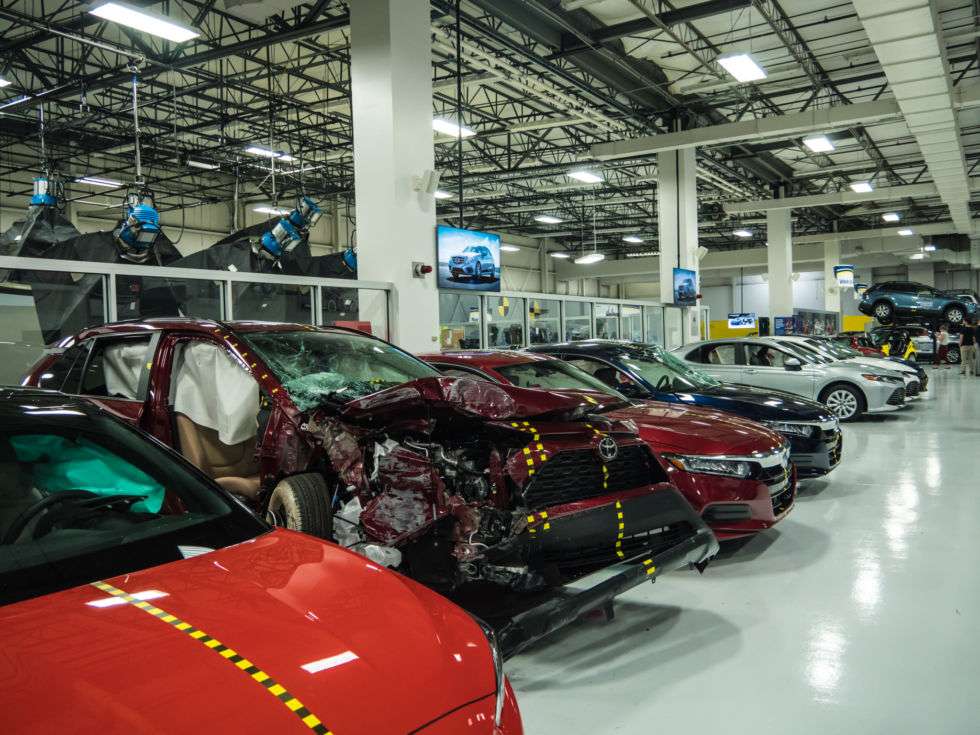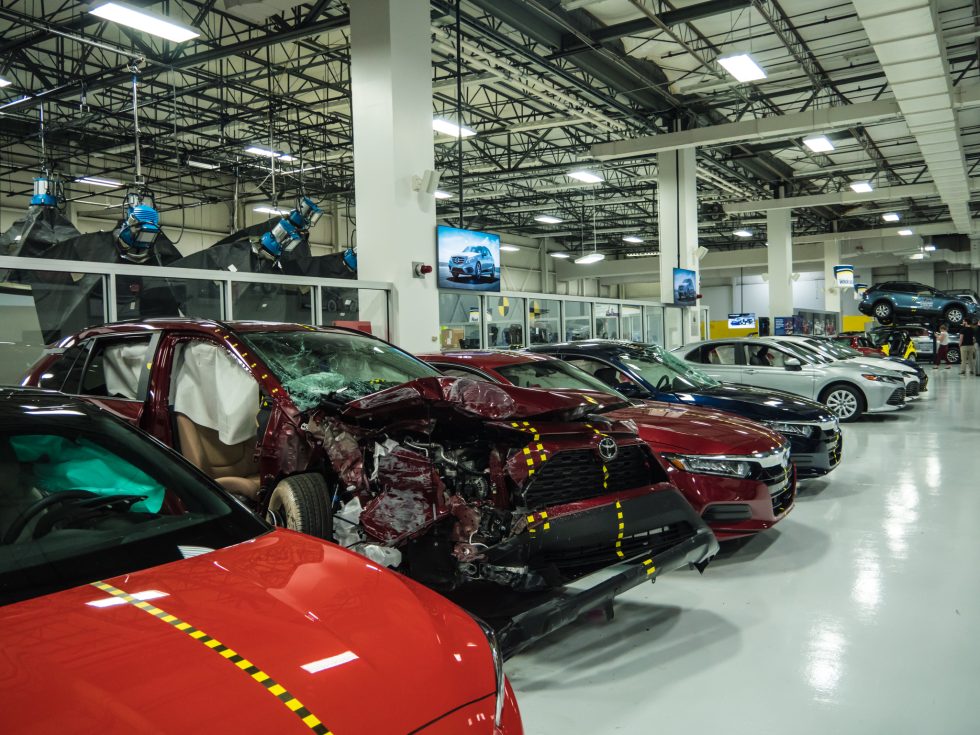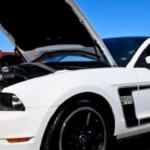
This institute crash-tests cars to make us all safer
-

A row of crash-tested vehicles at the IIHS Vehicle Research Center in Virginia. [credit: Jonathan Gitlin ]
RUCKERSVILLE, Va.—The wrecked remains of a 1959 Chevrolet Bel Air provide a stark illustration of just how far we’ve come with regards to automotive safety. The copper-colored scrap greets you in the reception area of the Insurance Institute for Highway Safety’s Vehicle Research Center, an automotive safety testing facility nestled between farms in the bucolic Virginia countryside a couple of hours from Washington DC. IIHS was set up in 1959 by the insurance industry to work on improving the safety of our vehicles, and to celebrate its 50th anniversary, the institute crashed the Bel Air into its then-current equivalent—a 2009 Chevrolet Malibu. The institute did this to prove conclusively that “they don’t build them like they used to. They build them better,” to quote IIHS’s then-president Adrian Lund.
IIHS crashed these two cars into each other as a 50th-birthday present.
The mangled remains of the Bel Air aren’t pretty. A wheel and tire mostly occupy the space that should be the driver’s footwell. The metal dashboard to the left of the steering wheel is covered in pink and blue greasepaint from where the dummy’s head made contact. The 2009 Malibu, while also a wreck, left its dummy in much better shape, thanks to seatbelts, airbags, and energy-absorbing crash structures. And yet, it too is eclipsed in the safety stakes by almost every vehicle on sale in 2019, in no small part thanks to the work conducted at the institute.
IIHS opened the Vehicle Research Center in 1992, and since then it’s been smashing cars into things (and things into cars) in the name of improved safety. The institute is constantly studying real-world crash data and designing new crash tests as a result, and its tests make automakers sit up and pay attention. That’s because safety sells in 2019, and the OEMs know they have to ace IIHS’s tests if they want to earn its coveted “Top Safety Pick” or the even-tougher “Top Safety Pick+” badge of honor.
Read 13 remaining paragraphs | Comments




